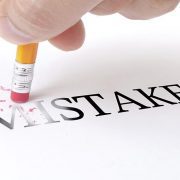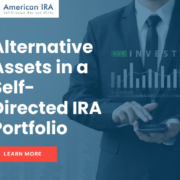How to Use Catch-Up Investing in a Self-Directed IRA for Retirement Savings Later in Life
The first rule of investing is to start early. If you can “invest early, and invest often,” you can overcome even significant mistakes with the power of compounding interest over time. But not everyone is so lucky. Some people have to play catch-up. If you are someone who’s only recently made retirement a priority, it helps to know what possible advantages a Self-Directed IRA can hold for boosting retirement savings later in life.
Make Full Use of Catch-Up Contribution Limits
There’s good news here: there is an inherent advantage to investing when you are older. For example, the IRS makes the following contribution limits available for traditional and Roth IRAs in 2019:
- $6,000 for investors 49 and under.
- $7,000 for investors 50 and older.
For someone who is 50 years or older—the type of investor who tends to have a larger income—this is a great way to make use of an account like a Self-Directed Roth IRA. Because you can use a Roth IRA to invest your post-tax money now, you can utilize your expanded budget to ensure an even larger tax-free growth as you age.
Keep Your Investments Safe and Diversified
If you are catching up on your investing late in life, then it’s more difficult to take chances on rapid growth. With a long investing timeline (say, 30-plus years), you can invest in emerging markets and the stock market. Even a big downswing after ten years, in such a case, should not harm your long-term prospects.
Investing for the next 5, 10, or even 15 years is a bit different. Putting 100% of your money into stocks, for example, would be risky. Even though the stock market provides predictable returns over a long enough timeline, it could drop in value by significant amounts. You should not expect to have to be stuck managing a portfolio that’s only 60% as large as what you’d hoped for.
The key to avoiding this is to build a retirement portfolio that’s safe and diversified. That includes exposure to stocks, sure, but also exposure to other asset classes that can provide you with stability:
- Real estate. Real estate can be one of the most powerful ways for people who have larger incomes but not a long investing history to have access to an immediate cash flow. Securing real estate within a Self-Directed IRA is a particularly powerful way to play “catch-up” as you attempt to build a sizeable retirement nest egg.
- Precious metals. Precious metals have a long history of retaining their value. While they can increase or decrease in price like any commodity, their overall stability lends some diversification to your portfolio.
- Private equity. The stock market may ebb and flow, but the value of an individual investment that continues to grow within your portfolio may not always be so susceptible to market turns.
The key here is to avoid putting all of your eggs into one basket, especially when it comes to one type of asset class.
Use a Self-Directed Roth IRA to Continue Contributing
You do not have to retire if you do not want to. One of the advantages of a Self-Directed Roth IRA is that it allows you to continue contributing even into later years, which allows you to take advantage of a larger retirement age income. This is particularly valuable for those who have spent a lot of time climbing up the ladder and have both the health and passion to continue working.
Interested in learning more about Self-Directed IRAs? Contact American IRA, LLC at 866-7500-IRA (472) for a free consultation. Download our free guides or visit us online at www.AmericanIRA.com.







